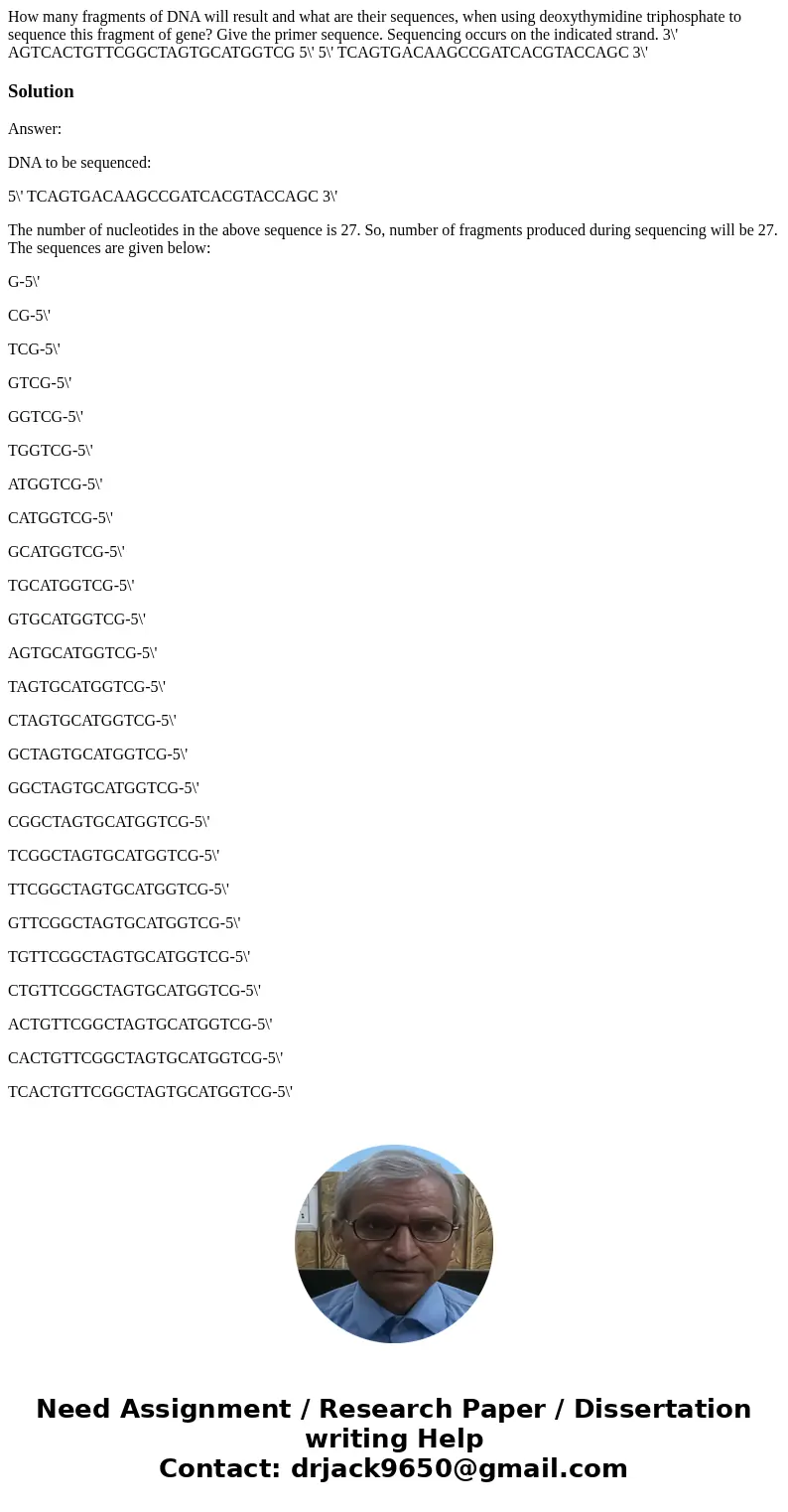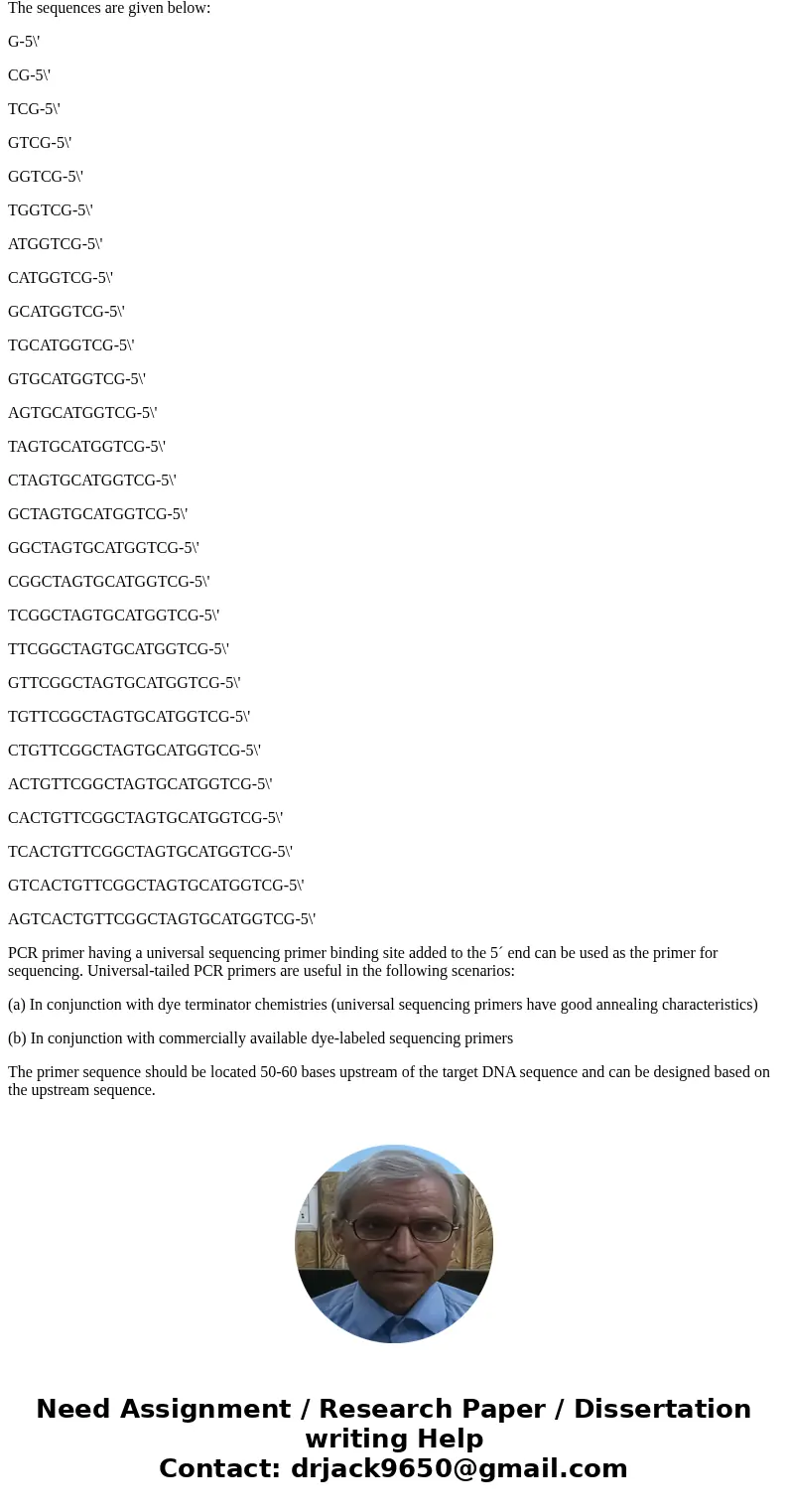How many fragments of DNA will result and what are their seq
Solution
Answer:
DNA to be sequenced:
5\' TCAGTGACAAGCCGATCACGTACCAGC 3\'
The number of nucleotides in the above sequence is 27. So, number of fragments produced during sequencing will be 27. The sequences are given below:
G-5\'
CG-5\'
TCG-5\'
GTCG-5\'
GGTCG-5\'
TGGTCG-5\'
ATGGTCG-5\'
CATGGTCG-5\'
GCATGGTCG-5\'
TGCATGGTCG-5\'
GTGCATGGTCG-5\'
AGTGCATGGTCG-5\'
TAGTGCATGGTCG-5\'
CTAGTGCATGGTCG-5\'
GCTAGTGCATGGTCG-5\'
GGCTAGTGCATGGTCG-5\'
CGGCTAGTGCATGGTCG-5\'
TCGGCTAGTGCATGGTCG-5\'
TTCGGCTAGTGCATGGTCG-5\'
GTTCGGCTAGTGCATGGTCG-5\'
TGTTCGGCTAGTGCATGGTCG-5\'
CTGTTCGGCTAGTGCATGGTCG-5\'
ACTGTTCGGCTAGTGCATGGTCG-5\'
CACTGTTCGGCTAGTGCATGGTCG-5\'
TCACTGTTCGGCTAGTGCATGGTCG-5\'
GTCACTGTTCGGCTAGTGCATGGTCG-5\'
AGTCACTGTTCGGCTAGTGCATGGTCG-5\'
PCR primer having a universal sequencing primer binding site added to the 5´ end can be used as the primer for sequencing. Universal-tailed PCR primers are useful in the following scenarios:
(a) In conjunction with dye terminator chemistries (universal sequencing primers have good annealing characteristics)
(b) In conjunction with commercially available dye-labeled sequencing primers
The primer sequence should be located 50-60 bases upstream of the target DNA sequence and can be designed based on the upstream sequence.


 Homework Sourse
Homework Sourse